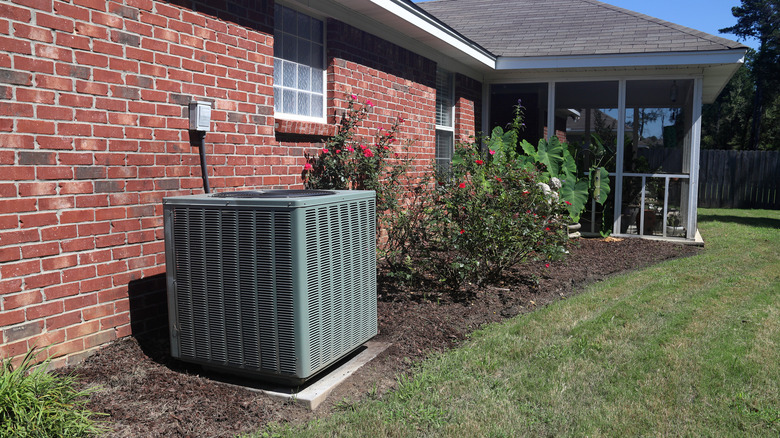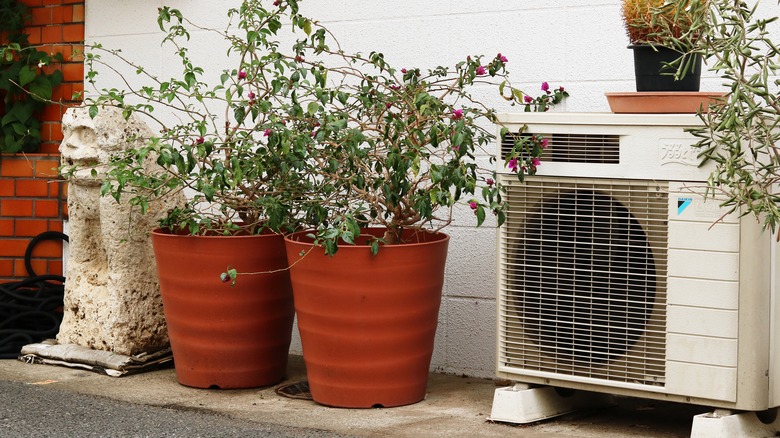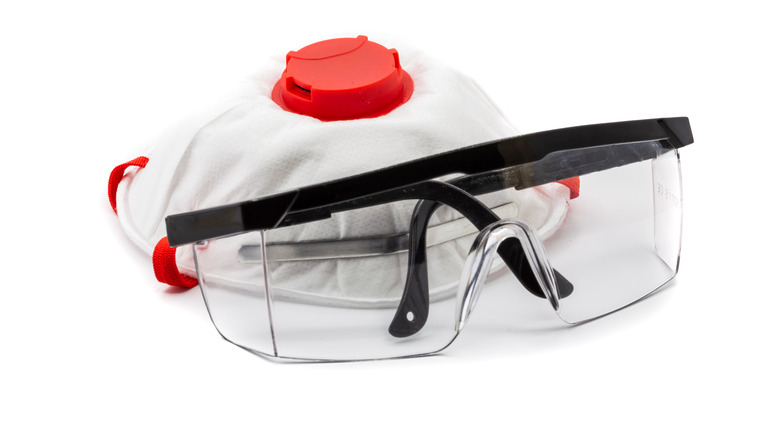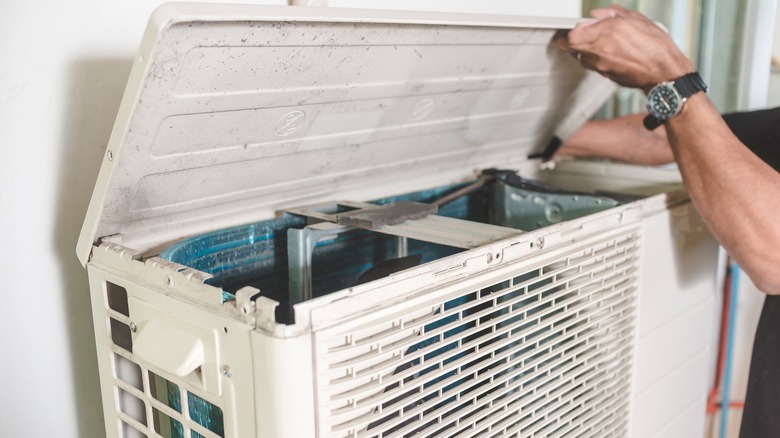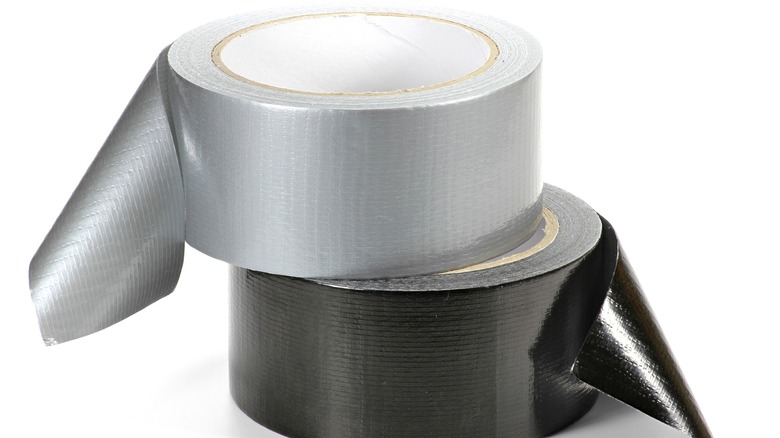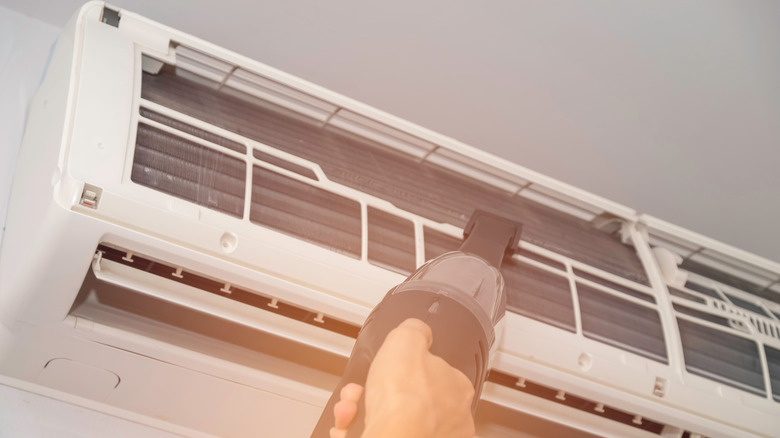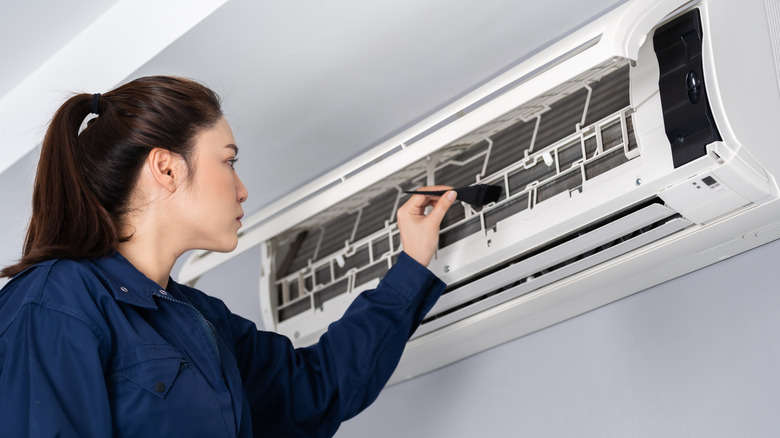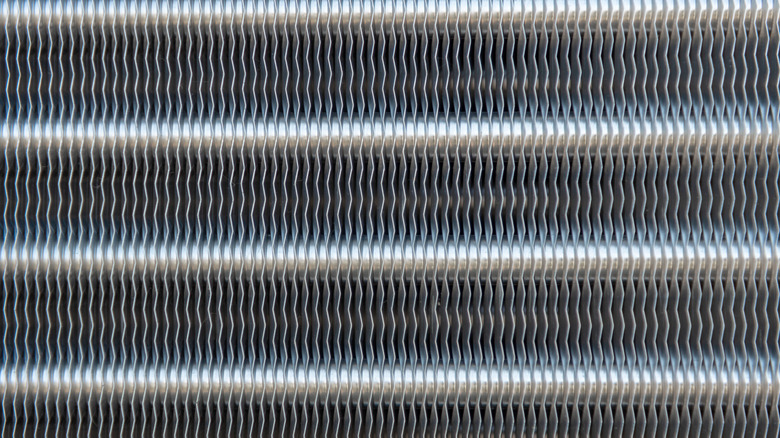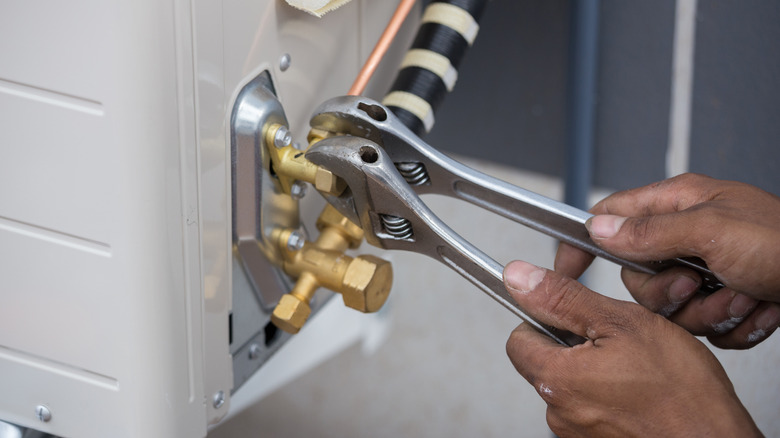How To Successfully Clean Your AC Condenser
To say that air conditioning is one of the underrated wonders of our world would be a very large claim to make. However, we would also not be too far from the truth. The air conditioner is a lifesaver in those furiously hot months of summer, and with demographics that have longer, hotter seasons, it's a life sustainer. Previously, we discussed exactly how to clean an in-house air conditioning unit ... now it's time to explain how to clean the AC condenser.
The AC condenser is essentially the machinery doing all of the back work. The deal is, while you get cool and comfortable air indoors, all the heat indoors is being taken out by the air conditioning condenser, writes Berkeys. Thus, if you would like to keep your energy costs at an all-time low, cleaning your AC condenser is a must. Not to mention that it helps your AC last its warranty. Keep reading for a step-by-step method of keeping the condenser clean.
1. Remove all plants and clear the area
The AC condenser is always located outside the home. Thus, it is exposed to the elements, the overgrowth of plants and weeds, bits of grass, dirt, bird poop, and even pesky bugs. The first step in cleaning the AC condenser is to clear the area of all overgrowths, writes The Leaflet.
You could always hire someone to come clear the debris and grass. However, if you would like to do it yourself, all you need is a lawnmower, some pruning scissors, a rake, and some gardening gloves. Simply cut the grass short with the lawnmower and rake the grass and other debris away from the condenser. If you have more tree overgrowths, you could always clip them away from your AC condenser with the pruning scissors (the gloves will protect your hands from branch scrapes). Once done, pack them up into a yard waste bag. While you may not want to clean your AC condenser too often, you definitely want to keep the grass, plants, and trees cleaned up around it, according to The Leaflet.
2. Turn the AC off and don some protective gear
The next thing to do after clearing the weeds from around your condenser is to switch off the AC. This is a basic safety measure to be taken when cleaning any electrically powered device, especially if you would be cleaning such a device with water, writes Service One. To switch off the AC, simply locate the shutoff box near the outdoor unit and turn it off. However, where that does not work or you cannot seem to locate the shut-off box, simply cut off power from the AC by using the circuit breaker, writes Berkeys.
Then, since you would be working with a rather dirty electric device, AC Texas advises that you should put on some protective gear. We recommend some cut-resistant gloves because not only does this prevent dirt from getting underneath your nails, it protects you from getting injured by the sharp blades of the condenser coil. Finally, you should get some eye protection against potential product spills and dust.
3. Clean the outer case then detach it
Get an old cloth, dab some water on it or your choice of cleaning product, then press the cloth gently against the surface of the outer case and drag. You want to clean off the outside of the condenser before even getting to the inside — this keeps excess dust and dirt from getting inside and adding more work. Once you have done this, Air Force One writes that you should detach the AC condenser covering to get all the debris out.
Now depending on which kind of covering your AC condenser has, you would need either a screwdriver or a nut driver to remove the screws. Simply take your tool, place it against your crew or bolt and turn it anti-clockwise until it is loose and ready to remove, says Instructables. If your screw or nut isn't coming off because of rust, you could always try knocking it slightly, tightening it by turning your tool clockwise, and then loosening it by turning it anti-clockwise.
4. Cover the open electric sections with plastic or tape
As soon as you get your AC condenser open, take a smart preventive measure — right before you begin to spray with your hose, or even before you scrub or apply your products, it is always best practice to cover every open wire and motor with plastic or tape. This is a prevention measure recommended by Quick Servant Company because you get to avoid complications that may arise if these motors or wires are exposed to the rush of water.
To do this is pretty easy, all you have to do is to gauge the size of the motor, cut some plastic just enough to cover the motor, wrap it around the object and hold it in place with some sealing tape. For wires, wrap the plastic around them in three or more layers and then hold them in place with some tape. This should prevent possible sparks and shocks when you are done cleaning the AC condenser.
5. Vacuum out all of the dirt
Once the outer covering is open, You'll find all sorts of debris inside, including cobwebs, leaves, dirt, dust, and much more, Be prepared; you'll probably even find some dead bugs in there. Now, while you may have heard that all you have to do is to flush it with water for better results, there are some other steps you're going to want to take.
Before you start spraying the water hose at it, first dust out all the cobwebs inside the condenser and then sweep out all of the debris in the condenser with a broom or a hand vacuum, the kind you clean your car interior with and love for its portability and small size, writes Bob Vila. It is important to clean out the debris in the condenser because accumulated dirt will reduce efficiency and compromise the AC Condenser lifespan, writes Simple Green, and simply getting it wet may not be enough to remove it all.
6. Clean the fins
The next step in cleaning the AC condenser is cleaning the fins. Here, we would advise you to be rather careful because not only are the fins able to cut you (which is why you needed the cut-resistant gloves), but the fins are also rather delicate and can be bent upon the slightest mistake. To clean the fins, Aireserv recommends that you use an AC fin comb to clean the evaporator fins and the condenser fins. The evaporator fins are those A-like or upside-down V-shaped metals (depending on your angle of vision) that are close to the evaporator. While the condenser fin is simply the slim metal that covers the condenser.
Thoroughly but gently scrub the fins with the AC fin comb and your desired product, and once done, hose it all down and repeat the process until this part of the AC condenser is thoroughly clean.
7. Dab with a microfiber cloth and straighten bent fins
As soon as you are done hosing it off, the next thing to do is to dab the condenser and all its parts with a microfiber cloth. We recommend using a microfiber cloth because these wonderful things made of polyester and nylon tend to have a more absorbent capacity and, as such, require less of your efforts in cleaning a particular area, writes Texas Microfiber. These characteristics guarantee you a fast dry time and a better absorbency of moisture. Also, it will help clean out any grime and lint you missed.
Afterward, try straightening the condenser fin coils with an AC fin comb until they are smooth. To do this, SFGate writes that you should place the fin combs on the fins, ensure that they are all set in between the fins, and then you can drag the fins down, working from top to bottom on all sides.
8. Lubricate the ports and assemble your device again
Once done with all that work, all you have to do next is to lubricate the ports of your air conditioning condenser fan with your desired product, writes Quick Servant Company. All you have to do is to apply a little bit of lubricant to each of the fan's ports to ensure its rotation is swift and hassle-free. Afterward, put your air conditioning condenser back together again. Simply put back the outer covering and tighten the screws or bolts, and you are good to go. Don't forget to turn the machine back on or the electricity to it.
Big Mountain recommends that you clean up your air conditioning condenser fan at least once a year, and when you cannot do it yourself, you can always employ the services of a professional to do it more often than you would clean it yourself. This way, you get to enjoy the cooling of the AC without compromising its efficiency and also the warranty.
